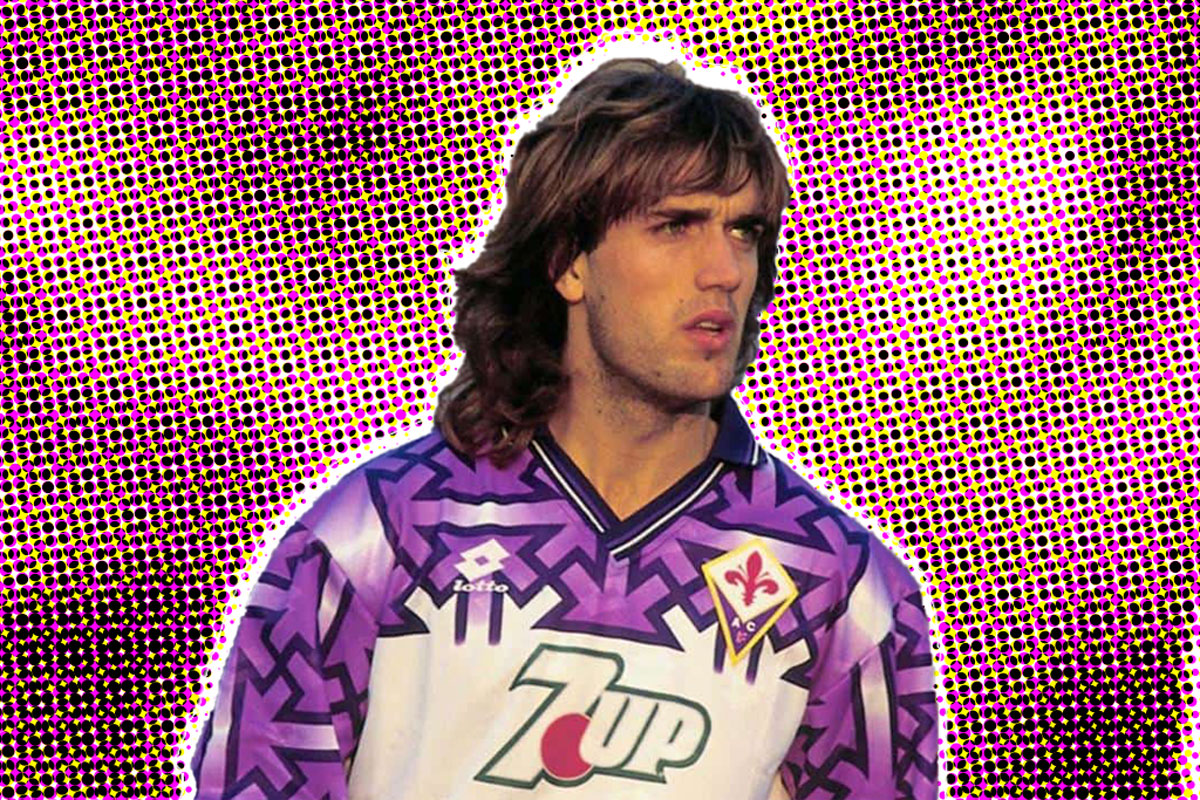Each new season in soccer/football, clubs aim to release some incredible-looking jerseys that will not only sell because of the star players’ names on the back but because of how they look. But one soccer jersey released in 1992, was so shocking, that it had to be banned.
This banned soccer jersey doesn’t belong to one of the big teams from the English Premier League, but rather AFC Fiorentina, an Italian club that currently competes in Serie A, Italy’s highest league for soccer. Before the banned soccer jersey even came to be, AFC Fiorentina was already a club mired in controversy.
WATCH: TikTok user TheFootballShirtClub explain why the 1992 Fiorentina shirt was banned.
It was founded in Florence, Tuscany, Italy in 1926 as the result of a merger between two older Florentine football clubs, but it was the man who instigated the merger that is the source of controversy. Luigi Ridolfi wanted to create an Italian football club that was big enough to rival clubs from Northwest Italy, such as Inter Milan and A.C. Milan. But Ridolfi was a member of the National Fascist Party, created in 1921 by Benito Mussolini.
Despite the club’s roots, AFC Fiorentina gained a solid fanbase and a new stadium (also named after a prominent fascist, Giovanni Berta). The club also experienced some success, winning their first Series A title in the 1955-56 season, and continued to perform well in domestic competition. The club’s second Serie A title (scudetto) came in the 1968-69 season.
Financial troubles ensued over the course of the next couple of decades but the 1990s saw the club under new ownership, who was committed to turning the club’s fortunes around. But, it was in 1992 that the now infamous banned Fiorentina jersey came to be.
AFC Fiorentina has long been nicknamed La Viola, as they have sported a purple-colour kit for much of their history. Tradition and rumour suggest the purple kit was an accident and the result of washing the club’s older red and white coloured kits in the local river. Fiorentina’s club crest is a red flue-de-lis on a white field, and these colours were often used for home and away kits.
So, in 1992, kit maker at the time, Lotto released an away kit that featured purple prominently, along with a jazzy design. Upon its release, Fiorentina’s 1992/93 away jersey seemed harmless, but upon closer inspection, it was anything but.
TikTok account @thefootballshirtclub says Fiorentina’s 1992/93 away jersey is “the most controversial kit in the history of football.”
How so? Well, if you take a close look at the abstract zigzags, you’ll soon see what appears to be the swastika (known for its appropriation by the Nazi party) repeated all over it. As @thefootballshirtclub says, it wasn’t until halfway through the 1992/93 season that people started to notice the controversial symbol and that it was then “removed on political grounds.”
The account goes on to say “the shirts were recalled and many were destroyed, leaving very few in the world today.”
It was certainly an unfortunate event, as whoatallthepies.tv says, the shirt was donned by some of Fiorentina’s most prolific players, including Gabriel Batistuta, Francesco Baiano and Brian Laudrup. Some people believed that, due to the club’s original ties with the National Fascist Party, the swastika was deliberately but covertly integrated into the shirt’s design.
However, many others believe it is simply a case of an accidental mistake by shirtmaker Lotto. In fact, Fiorentina released a statement saying as much, “Fiorentina and the manufacturers, Lotto, would like to underline that the optical [swastika] effect is purely a matter of chance.”
According to thesefootballtimes, the controversial Fiorentina away kit was worn on just 4 occasions before being purged and condemned to history, and was quickly replaced by a more simple plain white kit. Despite its associations, the 1992/93 Fiorentina away shirt remains one of the most sought-after soccer jerseys in history, albeit being more popular among those who don’t support the Italian club.
Read Next
